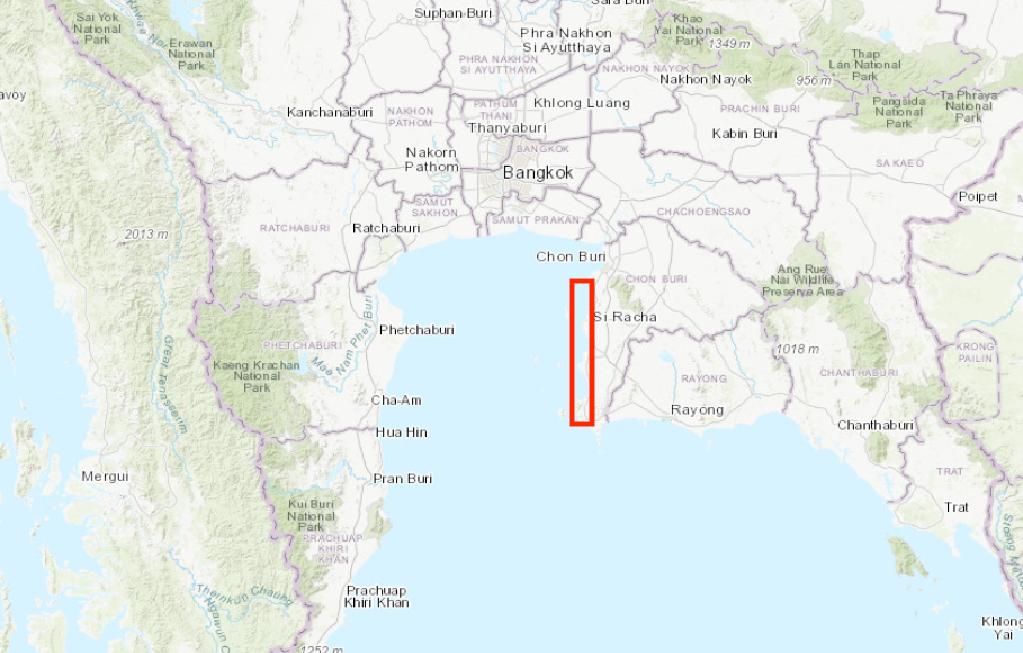Sattahip Fm
Type Locality and Naming
Along the coast near Si Racha and Sattahip districts, Chon Buri province, and on a nearby islands. Named by Ridd (2011). "Quarries NE of Si Racha and NE of Sattahip also provided good exposures but, in this rapidly developing region, quarries tend to be ephemeral, old ones being abandoned or built over and new ones being dug."
Synonym: หมวดหินสัตหีบ , Sattahip Shale Fm
[Figure: Screenshot from ESRI topographic map of QGIS, with type locality highlighted.]
Lithology and Thickness
Predominantly quartzite with minor argillite, and mainly argillite with subordinate quartzite. The argillite is somewhat thin bedded chert and interbedded shale (author opinion, Lexicon of Stratigraphic Names of Thailand, 2013). It is an off-white to pale grey rock, very hard and silica-cemented, kaolinitic, very fine- to medium-grained, moderately well-rounded, and cross bedded. It is mostly strongly cleaved and quartz-veined and, in places (on the islet east of Ko Sichang and on the mainland coast SE of Ko Sichang), it has been metamorphosed to a quartz–mica schist. Where the quartz-veining is intense, the bedding may be absent and there may be so much quartz that the rock becomes unrecognizable as having been a sediment. The more flaggy micaceous sandstone has been quarried on Ko Lan as a decorative paving stone. The argillite formation is best exposed on Ko Lan and in a very large roadside quarry 8 km NE of Sattahip. These rocks have been named the Sattahip Shale by Bunopas (1981) and he speculates that they overlie the Ko Sichang Limestone. Their color varies from dark brown to medium or pale grey, to red, to very pale purple or white. They are mostly laminated to thin-bedded and locally slightly silty; thin sandstone bands are absent although thick sandstone intervals several meters thick do occur. Some recrystallization of the clay mineral is common and the argillite then has a floury talc-like texture. (Kidd, 2011, in The Geology of Thailand).
Relationships and Distribution
Lower contact
Not given
Upper contact
Debated. Original view was that it was older than the Ko Sichang Lms (Ko Sichang Limestone Fm). But the ages of Sattahip might suggest it is coeval?
Regional extent
Eastern Region: Chon Buri province
GeoJSON
Fossils
Age
Depositional setting
Additional Information
Lexicon of Stratigraphic Names of Thailand of 2013.
